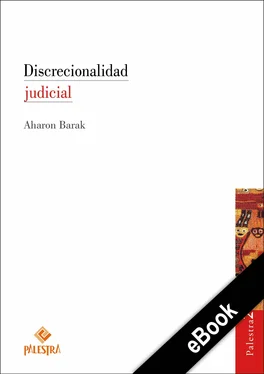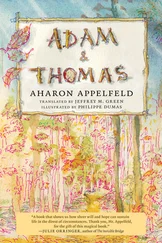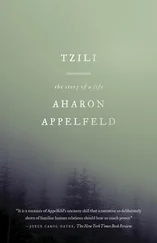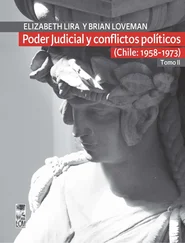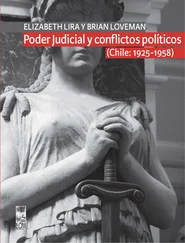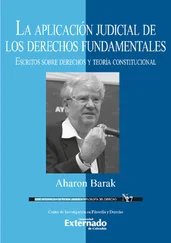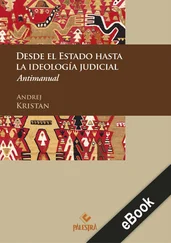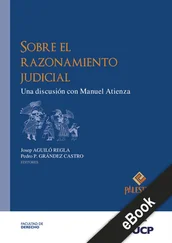1Véase A. Miller (1978), The Supreme Court: Myth and Reality, p. 11.
2Edwards (1984), “The Role of a Judge in Modem Society: Some Reflections on Current Practice in Federal Appellate Adjudication”, Clev. St. L. Rev. 32, pp. 385-388.
3Véase K. Davis (1969), Discretionary Justice.
4Pero, véase A. Paterson (1982) The Law Lords.
5Véase Mason (1962), “Myth and Reality in Supreme Court Decisions”, Va. L. Rev. 48, p. 1385.
6Véase B. Cardozo (1924), The Growth of the Law, p. 144.
7F. Frankfurter (1956), Of Law and Men, p. 32.
8Tal como la teoría de Kelsen. Véase H. Kelsen (1945) The Pure Theory of Law, p. 194 (trad. W. Ebenstein).
9Véase J. Frank (1963), Law and the Modern Mind, p. 357 (Anchor Book ed.) y White (1972), “From Sociological Jurisprudence to Realism: Jurisprudence and Social Change in Early Twentieth-Century America”, Va. L. Rev. 58, p. 993.
10Véase Singer (1984), “The Player and the Cards: Nihilism and Legal Theory”, Yale L. J. 94, p. 1 y Unger (1983), “The Critical Legal Studies Movement”, Harv. L. Rev. 96, p. 561.
11Véase G. Calabresi (1982), A Common Law for the Age of Statutes y R. Keeton (1969), Venturing to Do Justice.
12H. L. A. Hart (1961), The Concept of Law, p. 121; J. Raz (1979), The Authority of Law, p. 180.
13C. Montesquieu (1752), The Spirit of the Laws, cap. 6, p. 226 (trad. Nugent, 2ª ed.).
14Véase Pound (1908), “Mechanical Jurisprudence”, Colum. L. Rev. 8, p. 605.
15Sussman (1962), “Some Observations on Interpretation”, Rosen Book, p. 154.
16Véase R. Dworkin (1963), “Judicial Discretion”, J. of Phil. 6, p. 624; R. Dworkin (1977), Taking Rights Seriously, p. 81 y Sartorius (1968), “The Justification of the Judicial Decision”, Ethics 78, p. 171.
17Véase Holmes (1897), “The Path of the Law”, Haw. L. Rev. 10, p. 457; Pound (1923), “The Theory of Judicial Decision”, Haw. L. Rev. 36, pp. 641, 802 y 940; Friedmann (1961), “Legal Philosophy and Judicial Lawmaking”, Colum. L. Rev. 61, p. 821; Weiler, (1968) “Two Models of Judicial Decision-Making”, Can. Bar. Rev. 46, p. 406; Landau (1968), “Rule and Discretion in Law-Making”, Mishpatim 1, p. 292 y Witkon (1967), “Some Reflections on Judicial Law Making”, Isr. L. Rev. 2, p. 475.
18Véase supra nota 12; Hart (1958), “Positivism and the Separation of Law and Morals”, Harv. L. Rev. 71, p. 593.
19Véase supra nota 16 e infra notas 84, 86, 87 y 91.
20Véase Greenawalt (1975), “Discretion and Judicial Decision: The Elusive Quest for the Fetters that Bind Judges”, Colum. L. Rev. 75, p. 359; Greenawalt (1977), “Policy, Rights and Judicial Decision”, Ga. L. Rev. 11, p. 991; Wellington (1973), “Common Law Rules and Constitutional Double Standards: Some Notes on Adjudication”, Yale L.J. 83, p. 221 y N. MacCormick (1978), Legal Reasoning and Legal Theory, p. 195.
21Raz (1972), “Legal Principles and the Limits of Law”, Yale L.J. 81, p. 823; Raz, supra nota 12.
22Landau, supra nota 17, p. 292.
23Véase Isaacs (1922), “The Limits of Judicial Discretion”, Yale L. J. 32, p. 339; R. Pattenden (1982), The Judge, Discretion, and the Criminal Trial, p. 3.
24Véase Isaacs, supra nota 23, p. 340.
25F. H. 16/61 Registrar of Companies v. Kardosh, 16 P. D. 1209, 1215.
26Véase H. Hart y A. Sacks (1958), The Legal Process: Basic Problems in the Making and Application of Law, p. 162 (Tentative Edition) y, también, C. Radcliffe (1968), Not in Feather Beds, p. 271.
27Véase Tedeschi (1978), Legal Essays, p. 1: “La interpretación no es un proceso mecánico, ni siquiera un proceso psicológico. Es la reconstrucción del pensamiento de otro —pensamiento normativo, si se trata de la interpretación jurídica— y en absoluto puede ser comparada con el verter una sustancia de un recipiente a otro, ni con el reflejo de una imagen en un espejo o en una fotografía. La interpretación es copiar el pensamiento del otro en la variedad de nuestra vida espiritual, y eso sólo puede ser hecho por nuestro proceso de pensamiento”. Véase, también, Levy (1965), “The Nature of Judicial Reasoning”, U. Chi. L. Rev., 32, pp. 395-396. La imagen ofrecida por el profesor Radin, según la cual el juez es meramente una máquina que da un resultado tras haberse depositado una moneda, no refleja el proceso judicial, ni siquiera en los casos más obvios. Véase Radin (1925), “The Theory of Judicial Decision: or How Judges Think?” A.B.A.J. 11, p. 357.
28Véase Rosenberg (1971), “Judicial Discretion of the Trial Court Viewed from Above”, Syracuse L. Rev. 22, pp. 635-636: “Si la palabra ‘discrecionalidad’ transmite a las mentes jurídicas un núcleo sólido de significado, una idea central por encima de todas las demás, esa idea es la de elección”. Esto es lo que Llewellyn denominó “libertad de acción” [Law of Leeways]: K. Llewellyn (1960), The Common Law Tradition: Deciding Appeals, p. 219.
29Cardozo, supra nota 6, p. 58.
30Cardozo, supra nota 6, p. 59.
31Por otro lado, el profesor Davis define a la discrecionalidad del modo siguiente: “Un funcionario público tiene discrecionalidad siempre que los límites efectivos a su poder le permitan elegir entre posibles cursos de acción o inacción”. Al explicar esta definición, el autor señala que “la discrecionalidad no se limita a lo que está autorizado o lo que es legal, sino que incluye todo lo que está dentro de “los límites efectivos” del poder del funcionario. Esta fraseología es necesaria porque mucha discrecionalidad es ilegal o de legalidad cuestionable”. Davis, supra nota 3, p. 4. No acepto este enfoque. Cuando una de las alternativas no es lícita, no hay discrecionalidad para elegirla, incluso aunque pudiera ser elegida en la práctica.
32Véase G. Gottlieb (1968), The Logic of Choice, p. 117.
33Véase Sartorius (1975), Individual Conduct and Social Norm, p. 283.
34S. de Smith (1980), Judicial Review of Administrative Action, p. 278 (4ª ed.).
35Infra notas 93-102 y el texto que las acompaña.
36Tomo la expresión ‘casos difíciles’ del profesor Dworkin, quien tiene el ‘copyright’ sobre ella: véase R. Dworkin, supra nota 16, p. 81.
37Sobre ‘comunidad jurídica’ o ‘comunidad interpretativa’, véase Fiss (1982), “Objectivity and Interpretation”, Stan. L. Rev. 34, p. 739.
38Véase Greenawalt, “Discretion and Judicial Decision”, supra nota 20, p. 386 y J. Bell (1983), Policy Arguments in Judicial Decisions, p. 24.
39Cheshin J. en H. C. 1/50 Grosman v. The Military Prosecutor, 4 P. D. 63, 70.
40Véase J. Stone (1966), Social Dimensions of Law and Justice, p. 674.
41Véase Hughes (1968), “Rules, Policy and Decision Making”, Yale L. J. 77, pp. 411-414.
42Véase W. Greene (1938), The Judicial Office 10 (Holdsworth Club, Presidential Addresses).
43Véase J. Frank (1949), Courts on Trial.
44Sussman (1971), “The Courts and the Legislative Branch”, Mishpatim 3, p. 213.
45Véase Dugdale (1972), “The Statutory Conferment of Judicial Discretion” N.Z.L.J. 556; Wexler (1975), “Discretion: The Unacknowledged Side of Law”, U. Toronto L.J. 25, p. 120; Finlay (1976), “Judicial Discretion in Family and Other Litigation”, Monash U.L. Rev. 2, p. 221 y Burrows (1976), “Statutes and Judicial Discretion”, N.Z. U.L. Rev. 7, p. 1.
46Esta cita aparece en Isaacs, supra nota 23, p. 343.
47Véase Atiyah (1980), “From Principles to Pragmatism: Changes in the Function of the Judicial Process and the Law”, Iowa L. Rev. 65, p. 1249.
48Sec. 36 de la Ordenanza de Ilícitos Civiles (nueva versión).
49Véase J. Fleming (1983), The Law of Torts (6ª ed.) y J. Smith (1984), Liability in Negligence.
50La cuestión de la “wrongful life”. La Corte Suprema israelí impuso responsabilidad a los médicos hacia el niño y sus padres: C. A. 518/82 Zeitzoff v. Katz.
Читать дальше
